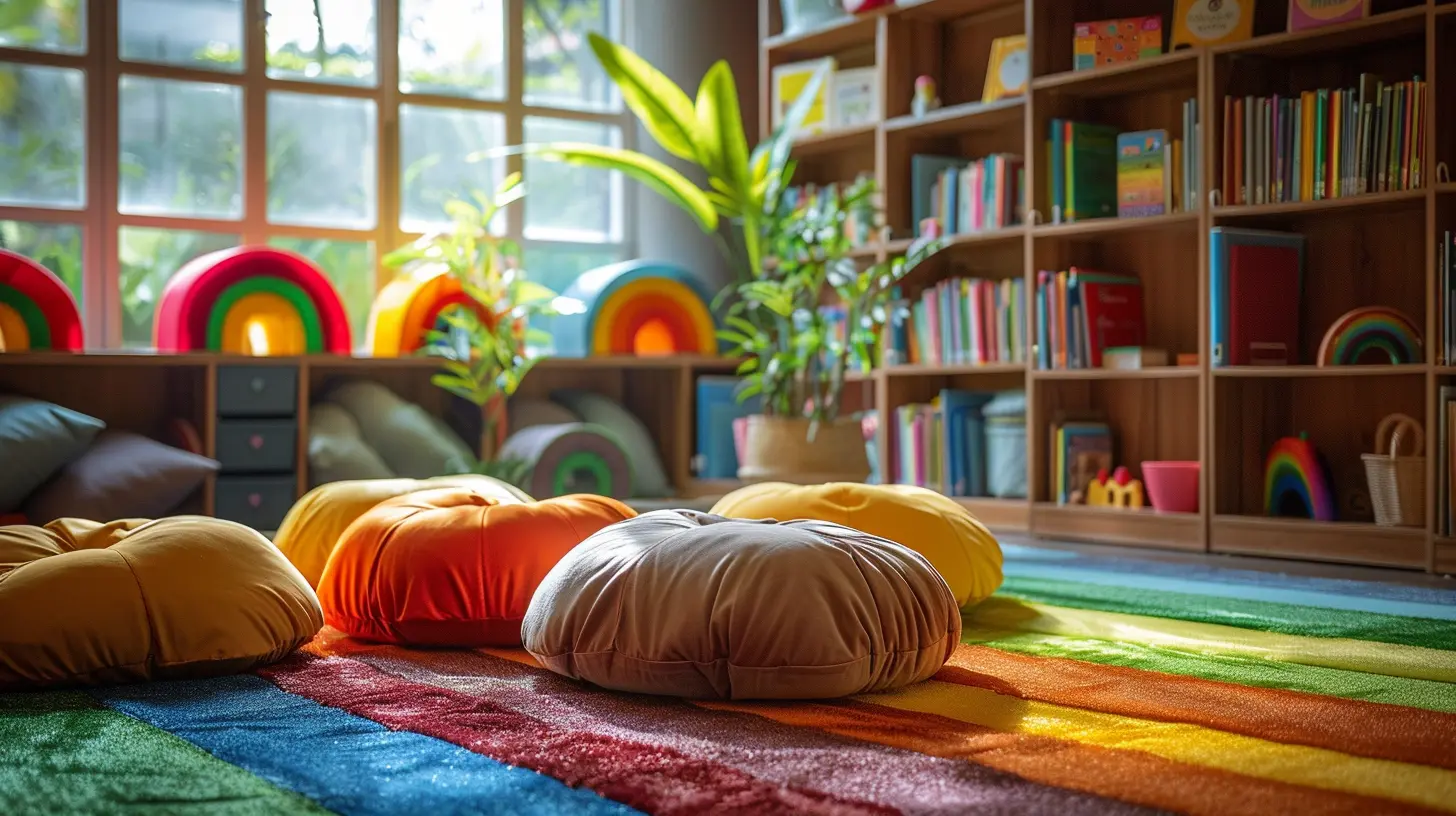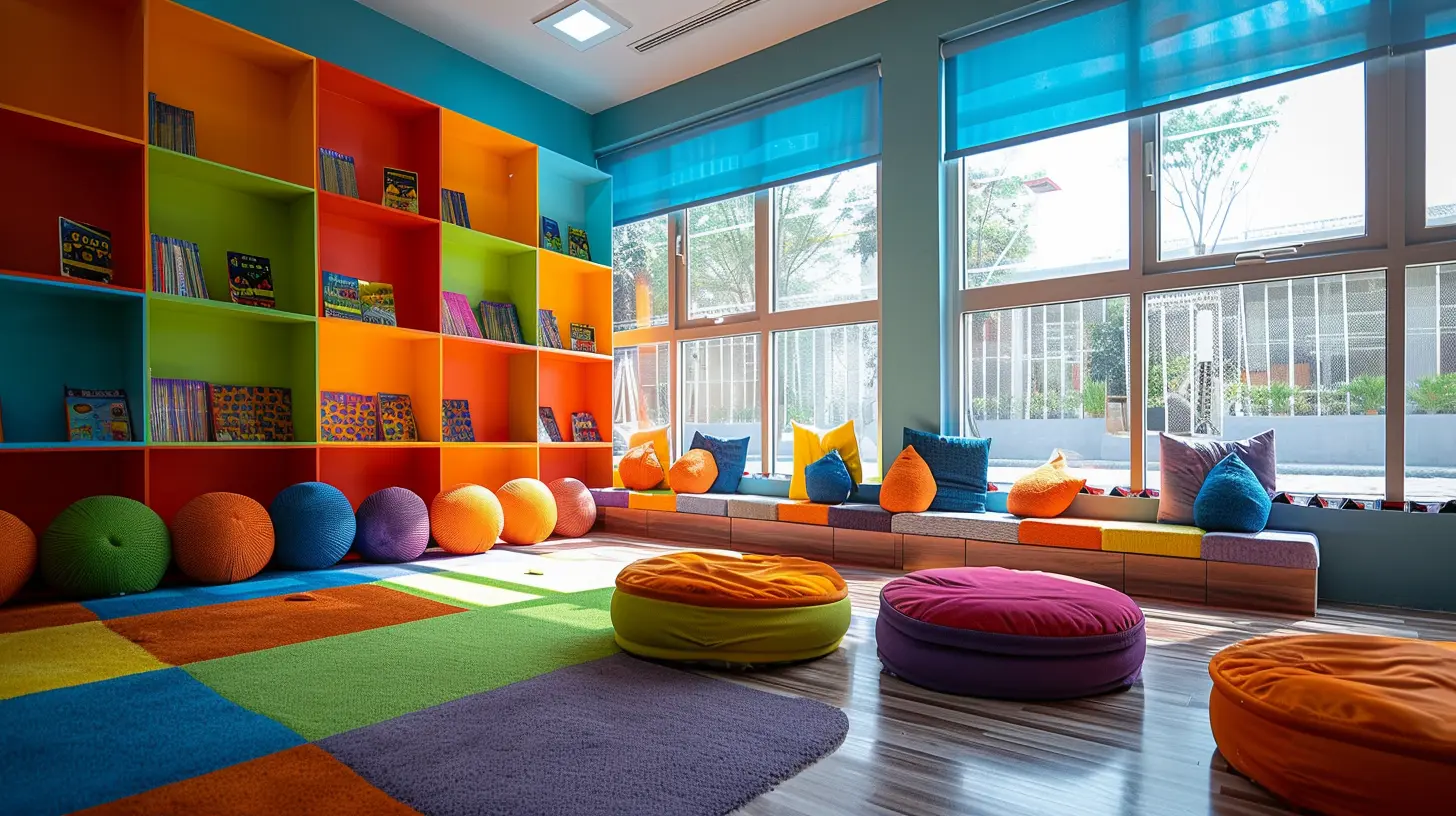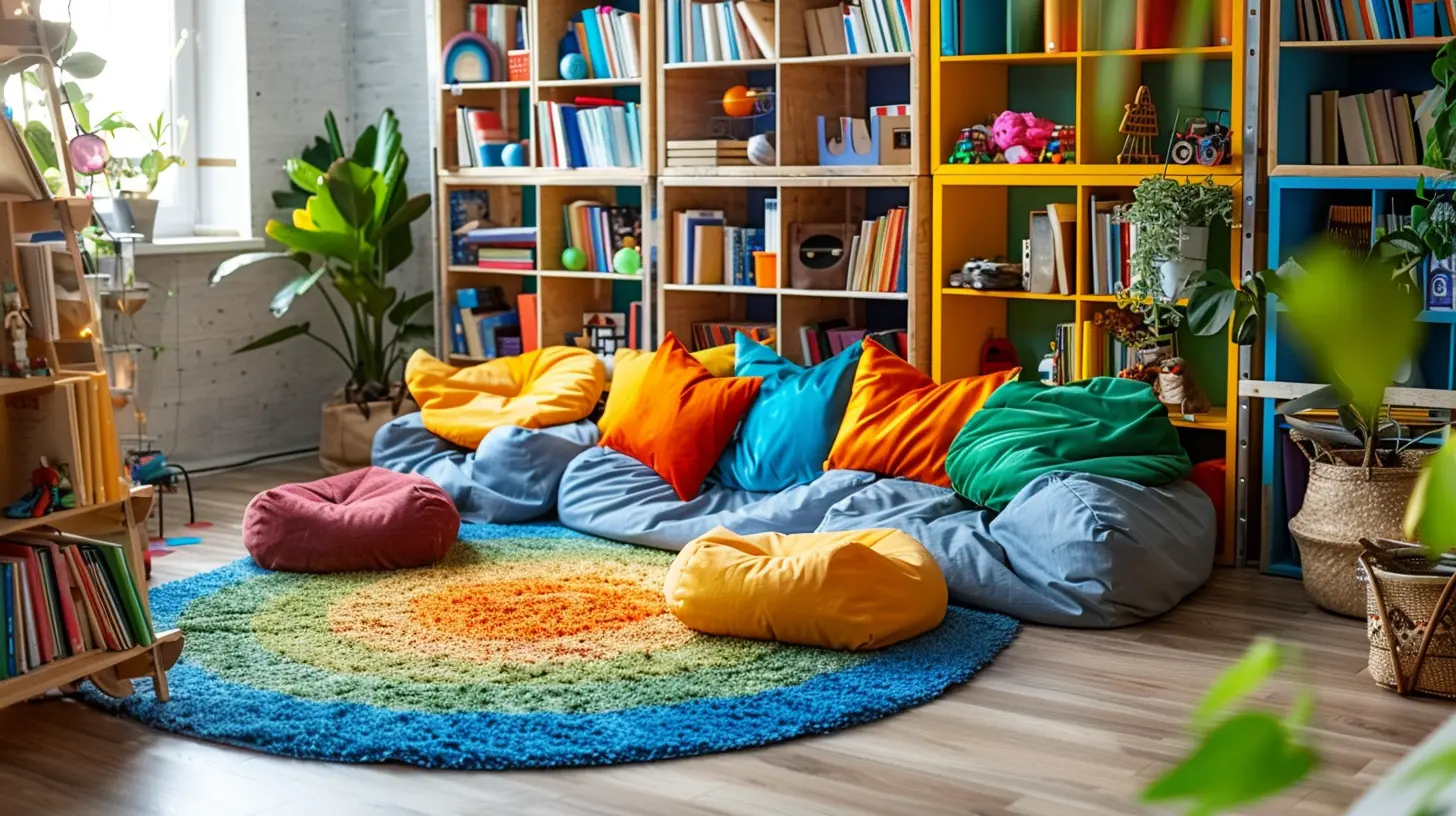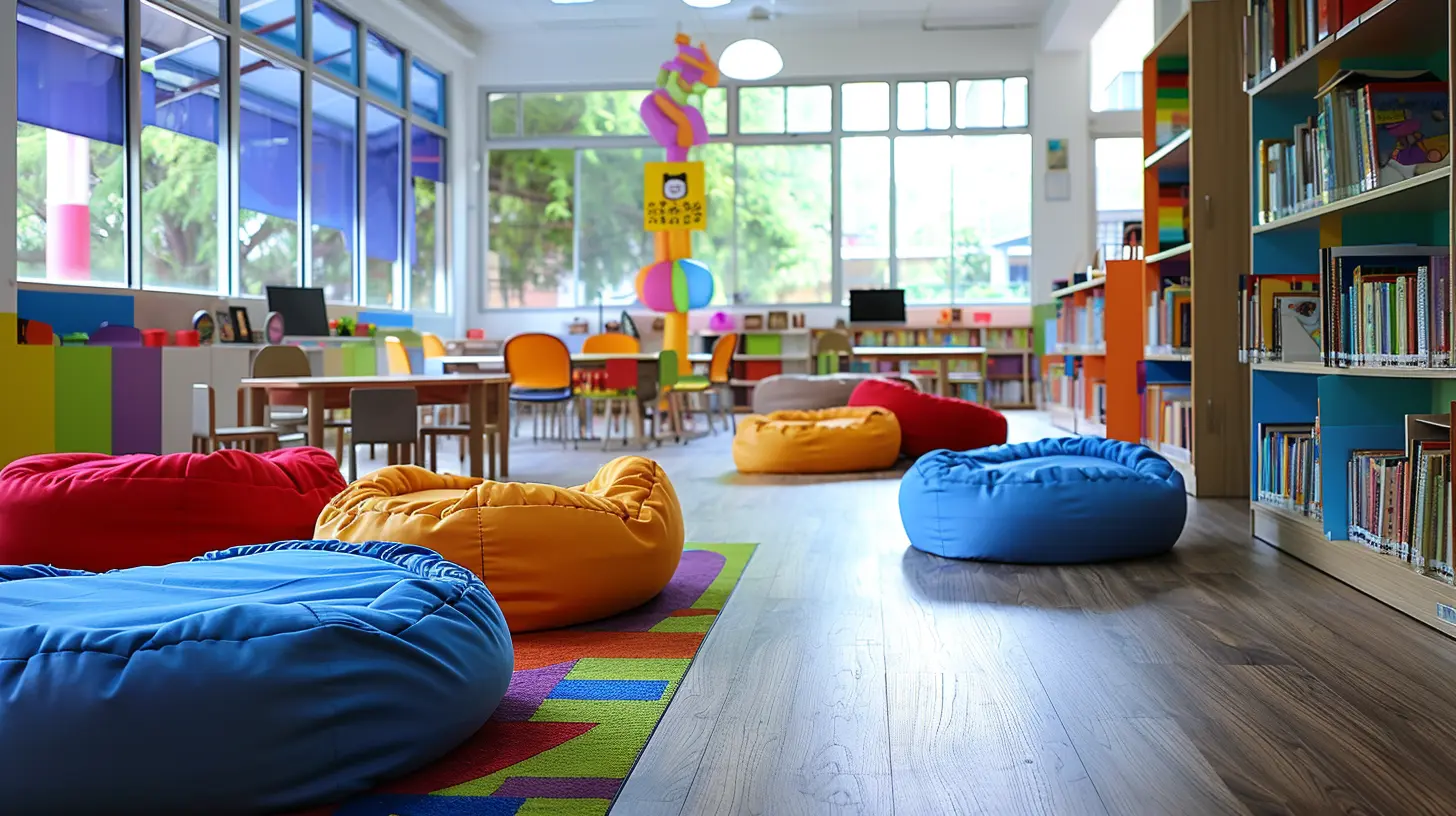How to Create Auditory-Friendly Learning Spaces
30 April 2025
So, you're on a quest to make learning spaces more ear-friendly? Bravo! Because apparently, expecting students to learn while battling the symphony of chair squeaks, rustling papers, and that one kid who always taps his pen like a drum solo is just too much to ask. But don't worry—I’ve got your back.
Creating an auditory-friendly learning environment isn’t rocket science, but let’s face it, some classrooms sound like a rock concert minus the fun. Let’s talk about how to turn that chaotic soundscape into an oasis of clear, focused learning.

Why Does an Auditory-Friendly Space Even Matter?
You might be thinking, "Why bother? Students just need to listen better!" Well, let me stop you right there.Not everyone has the ability to effortlessly tune out background noise like a Jedi master. Some students have auditory processing disorders (APD), hearing impairments, or just get plain old distracted by every tiny sound. And honestly, even those with perfect hearing struggle when classrooms sound like an overcrowded coffee shop where everyone's talking at once.
If we truly want students to thrive, we need to stop treating their ears like endurance-test subjects and actually create spaces that enhance learning instead of sabotaging it. 
The Biggest Offenders: What’s Messing with Your Classroom Acoustics?
Before we dive into fixing the problem, let’s call out the biggest noise culprits:1. Echoes and Reverberation – The Haunting Sound of Indecision
Ever heard your own voice bounce back at you like it's mocking your life choices? That’s reverberation. Hard surfaces like tiled floors, bare walls, and high ceilings turn your classroom into an echo chamber of doom.2. Background Noise – The Uninvited Guest
Between HVAC systems, hallway chaos, and the teacher next door who apparently thinks they're hosting a TED Talk, background noise is a major offender. It drowns out important instructions and turns group discussions into a garbled mess.3. Poor Speaker Placement – The Muffled Disaster
Ever sat in the back of a classroom and realized you're only catching every third word? Bad speaker placement means that some students get crystal-clear audio while others feel like they’re eavesdropping from outside a locked door.4. Chattering Students – The Never-Ending Commentary
Let’s be real. Students love to talk. Some discussions are on-task, others are about who’s dating whom. Either way, excessive chatter creates an auditory nightmare.
How to Fix It: Creating an Auditory-Friendly Learning Space
Okay, enough complaining. Let’s actually fix things.1. Tame the Echo with Acoustic Treatments
You wouldn’t teach in a cave, so why let your classroom sound like one? Here’s what helps:- Carpets & Rugs: Goodbye, noisy footsteps. Hello, cozy vibes.
- Bulletin Boards & Fabric Art Displays: Not just decoration—these bad boys absorb sound like a sponge.
- Acoustic Panels & Ceiling Tiles: If school budgets allow (ha, I know), these are game-changers.
2. Control Background Noise Before It Controls You
While you can’t exactly tell the HVAC system to shut up, you can combat background noise:- Use Curtains & Blinds – Not just for blocking light, but also for muffling outside noise like buses and recess mayhem.
- Strategic Seating Arrangements – Keep students who struggle with noise away from high-traffic areas. Put quieter students near the front where they can actually hear.
- Tennis Balls on Chair Legs – The easiest DIY noise reduction hack ever. Desks shouldn’t sound like they’re auditioning for a horror movie.
3. Amplification: Because Your Voice Deserves Better
Gone are the days of straining your vocal cords like a street performer. A simple microphone and speaker system ensures everyone hears you clearly.Some schools invest in FM systems that send sound directly to hearing aids or personal devices for students who need it. Fancy, right?
4. Teach Students the Art of Noise Control
Let’s not pretend that students will just magically become quieter. We need a game plan.- Classroom Norms – Set clear expectations from day one. Inside voices aren’t just for kindergarten.
- Non-Verbal Cues – Hand signals or light indicators can signal when it’s time to lower the volume—without constant nagging.
- Noise-Canceling Headphones – For students with sensory sensitivities, these little lifesavers offer relief from excessive noise.
5. Optimize Speaker and Technology Placement
If classrooms are using microphones, interactive whiteboards, or projectors, placement matters.- Ceiling-Mounted or Wall Speakers – Ensure even sound distribution, so no one is stuck lip-reading from the back.
- Test Volume Levels – Just because it’s loud doesn’t mean it’s clear. Adjust volume to a level that reaches everyone without blasting eardrums. 
The Bonus Round: Tech to the Rescue
If we’re living in a world where smart fridges exist, surely we can use technology to fix our sound problems.1. Sound Field Systems
These amplify the teacher’s voice evenly across the room, ensuring no one has to guess what was just said.2. Speech-to-Text Software
For students who struggle with auditory processing, real-time captions on screens can be a game-changer.3. White Noise Machines
It sounds counterintuitive, but soft white noise can help drown out distracting background sounds while still allowing speech to come through clearly.Final Thoughts: Silence is Not the Goal
Let’s get one thing straight—an auditory-friendly classroom doesn’t mean a silent one. Learning spaces should be lively, engaging, and full of collaborative discussions. But when the noise level resembles an unsupervised sleepover, it’s time to make changes.By managing echoes, minimizing distractions, and using technology to our advantage, we can craft a space where students actually hear what’s being taught instead of just nodding along and hoping for the best.
So, are you ready to ditch the classroom chaos and create an auditory-friendly learning space? Your students—and your sanity—will thank you.
all images in this post were generated using AI tools
Category:
Learning StylesAuthor:

Monica O`Neal
Discussion
rate this article
6 comments
Fatima Ross
Unlock the secrets of sound; your classroom could whisper knowledge or drown it out.
May 8, 2025 at 11:33 AM

Monica O`Neal
Absolutely! Creating auditory-friendly spaces transforms how students engage and absorb information, making learning both effective and enjoyable.
Benjamin McInnes
Great insights on enhancing auditory learning! Creating welcoming spaces truly makes a difference in student engagement and success.
May 6, 2025 at 12:58 PM

Monica O`Neal
Thank you! I'm glad you found the insights valuable. Creating inviting spaces really can transform the learning experience!
Helen Baxter
Great article! I love the emphasis on creating auditory-friendly learning environments. It's amazing how simple adjustments can make such a difference in focus and retention. Can't wait to try out some of these tips in my own space. Thanks for sharing these valuable insights!
May 5, 2025 at 7:12 PM

Monica O`Neal
Thank you for your kind words! I'm glad you found the tips helpful and can't wait to hear how they work in your space!
Taryn Fisher
Creating auditory-friendly learning spaces isn't just about soundproofing; it's about fostering engagement. Think soft colors, strategic furniture placement, and versatile materials to absorb noise. By prioritizing acoustics, we empower students to focus, collaborate, and thrive—turning every classroom into a harmonious environment where learning can truly resonate. Let’s tune in!
May 5, 2025 at 4:31 AM

Monica O`Neal
Thank you for highlighting the importance of engagement in auditory-friendly spaces! Your insights on colors and furniture placement are spot on—creating harmonious environments truly enhances learning.
Xavi McIlroy
So, let’s just fill the room with bubble wrap and see how that goes, right? Who needs silence when you've got the soothing sounds of crinkling plastic? Educational gold, I tell you!
May 2, 2025 at 8:00 PM

Monica O`Neal
While bubble wrap can be fun, creating truly auditory-friendly learning spaces involves more than just noise; it requires thoughtful design to minimize distractions and promote focus.
Allison McGuire
This article effectively highlights the importance of acoustics in education, yet overlooks the role of technology integration.
April 30, 2025 at 11:40 AM

Monica O`Neal
Thank you for your feedback! I appreciate your point about technology integration, and I agree it plays a crucial role in creating auditory-friendly learning spaces. I'll consider addressing this in future discussions.
MORE POSTS

Using Physical Education to Build Confidence and Self-Esteem

Digital Literacy Skills Every College-Bound Student Needs

Exploring the Benefits of Continuing Education for Mid-Career Professionals

Analyzing the Impact of Title IX on School Sports and Beyond

The Influence of Lobbyists on K-12 Education Policy